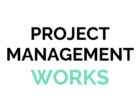When working on a project of significant scope, it’s highly likely that the end result will look different from the initial plans. This is, in many ways, a good thing: insight from new data into what works and what doesn’t, the emergence of new technology, and changing consumer needs can all influence a project’s direction for the better.
However, fundamentally changing the scope of a project is only a good thing if the team behind it is capable of handling these changes effectively, without wasting excessive time and money. Too often, projects with real promise have crashed and burned due to constant changes that are poorly implemented into the project development process. This is most often manifested in the form of scope creep, a phenomenon where the aims of a project grow at a rate faster than those working on the project are able to keep up.
What is Scope Creep?
Scope creep is a common term in project management referring to uncontrolled growth in a project’s scope that is unable to be met by its actual development. It has also been referred to as feature creep and kitchen sink syndrome. Scope creep has killed promising projects of many kinds, in the realms of civic engineering, software development, and consumer electronics, among others.
What Causes Scope Creep?
There are a few notable causes of scope creep, some more obvious than others. Understanding what causes them is instrumental to properly managing your own projects, as you can better identify and quash potential disasters.
If a project’s development cycle is long enough, technology can develop that disrupts the market a project is geared toward. This has been seen often in software development, due to the accelerated pace at which new technology develops in this field. One notorious example was the painfully long development cycle of the video game Duke Nukem Forever, which was stretched to 15 years. This was because of rapid development in computer technology necessitating multiple make-overs, as the development team started over in different game engines several times.
Whether it’s a change in the expectation of the consumers, the financial backers, or the heads of development, a change in expectation can result in scope creep, followed usually by project failure. An example of this can be seen in the development of the crowdfunded myIDkey, a small electronic device meant to manage login information for numerous accounts. With the promotion of a new CEO after the project received its funding, their goal to create a “breakthrough device” led them to fundamentally change the internal components of the original design. The result was a $3.5 million project crashing and burning, with almost the entire team laid off after 18 months.
How to Prevent Scope Creep
Just as there are many ways scope creep is caused, there are many ways that scope creep can be avoided. With a bit of knowledge and forethought, scope creep can be identified as it arises and dealt with effectively and efficiently.
It’s important to maintain a clear line of communication through all channels of the project development team, from the start of the project. This means that the higher ups need to have clear communication to people involved in the general production of the project, and have clear communication to people funding the project. If you maintain clear communication with the financial backers, you know exactly what they expect from the project and can plan accordingly. If you maintain clear communication with the development team, you will know exactly what you are capable of and plan accordingly. Failure to accurately gauge either of these aspects can lead to scope creep, so this is essential to keeping things running smoothly during production.
When a solid plan has been established that satisfies the needs of the financial backers and is within the capabilities of the developers, stick to that plan. Avoid making changes unless they are absolutely necessary, where failing to do so will result in project failure. If you find a method to cut costs of production halfway through the process, don’t implement it for the sake of cutting cost; only implement it if the change is minimal, and the money saved is vital to continuing the project. If a competitor designs a similar product with more features, resist the urge to change your own project in response. Even the smallest changes can snowball into scope creep, so consistency is the best policy when it comes to successfully finishing a project.
Author Bio:
Amit Patel is a contributor at https://crushthepmexam.com/ an online resource dedicated to helping professionals pass their PMP Exams on their first try. They provide invaluable reviews, tools, and study tips to fast-track the success of future PMP professionals.

